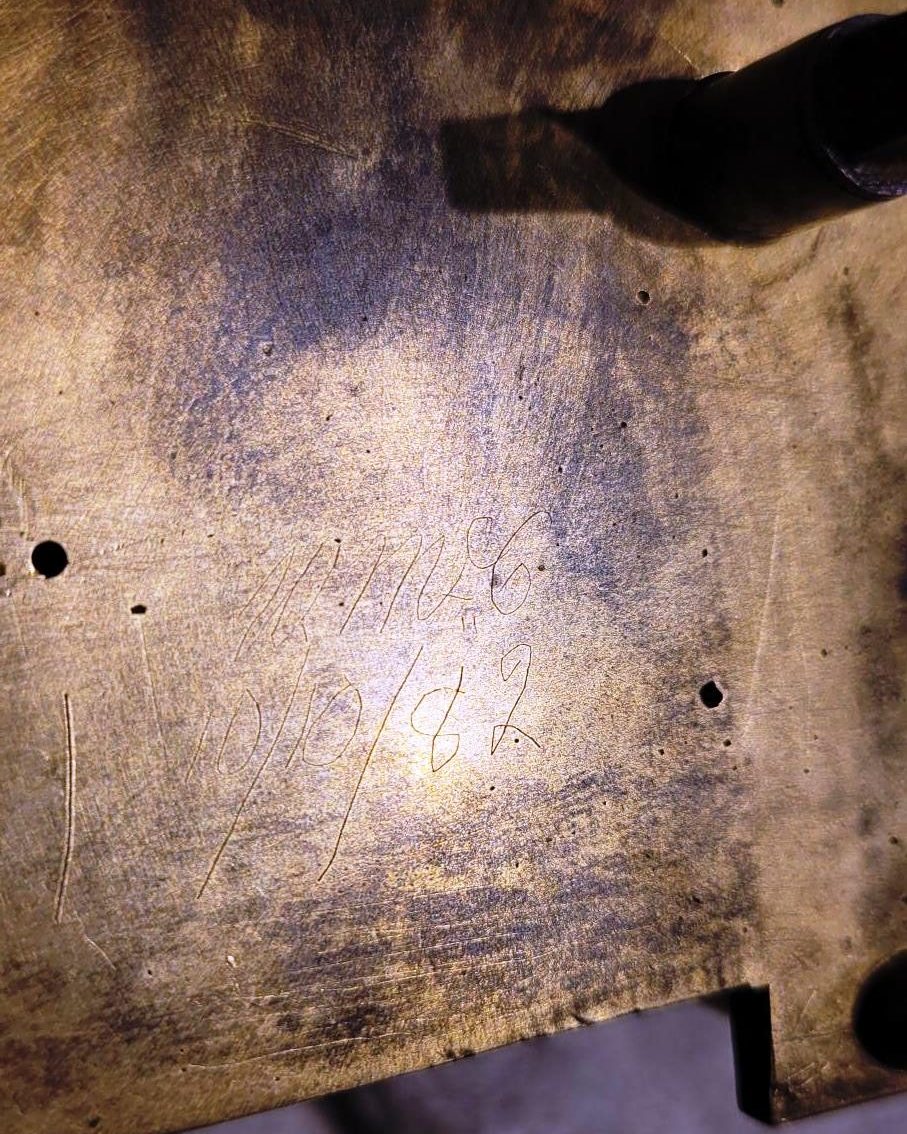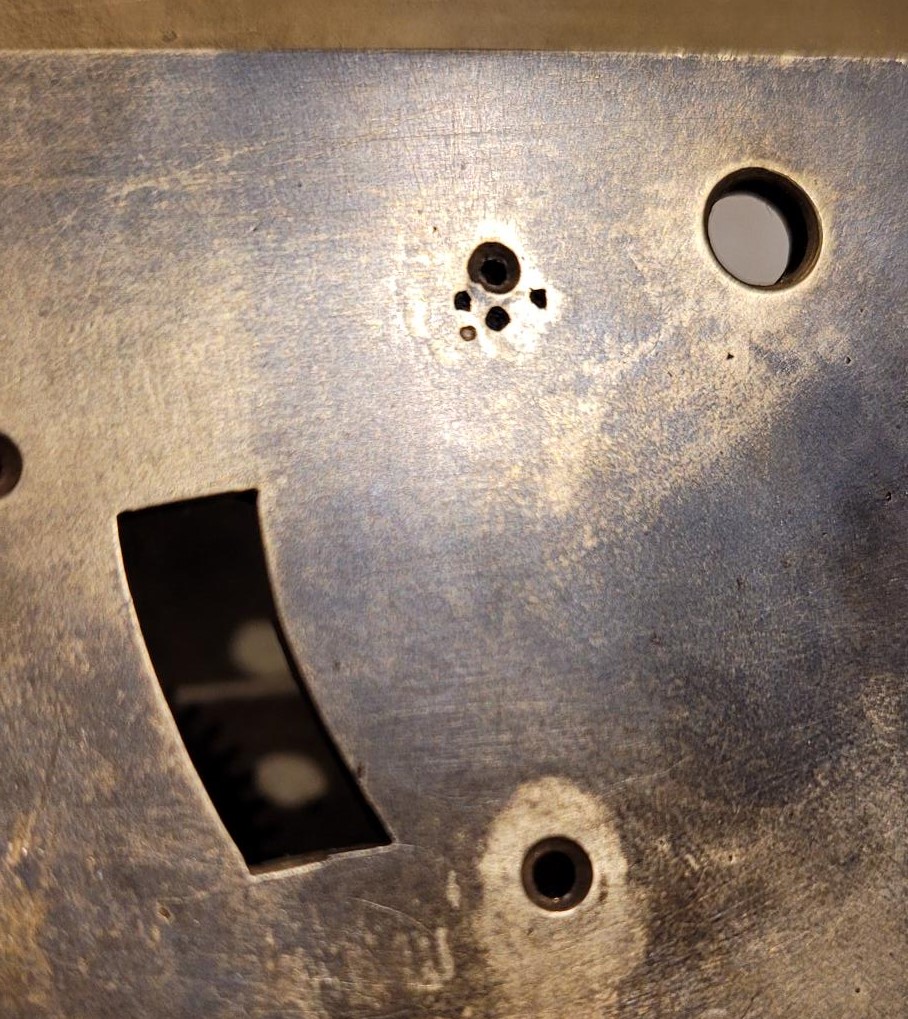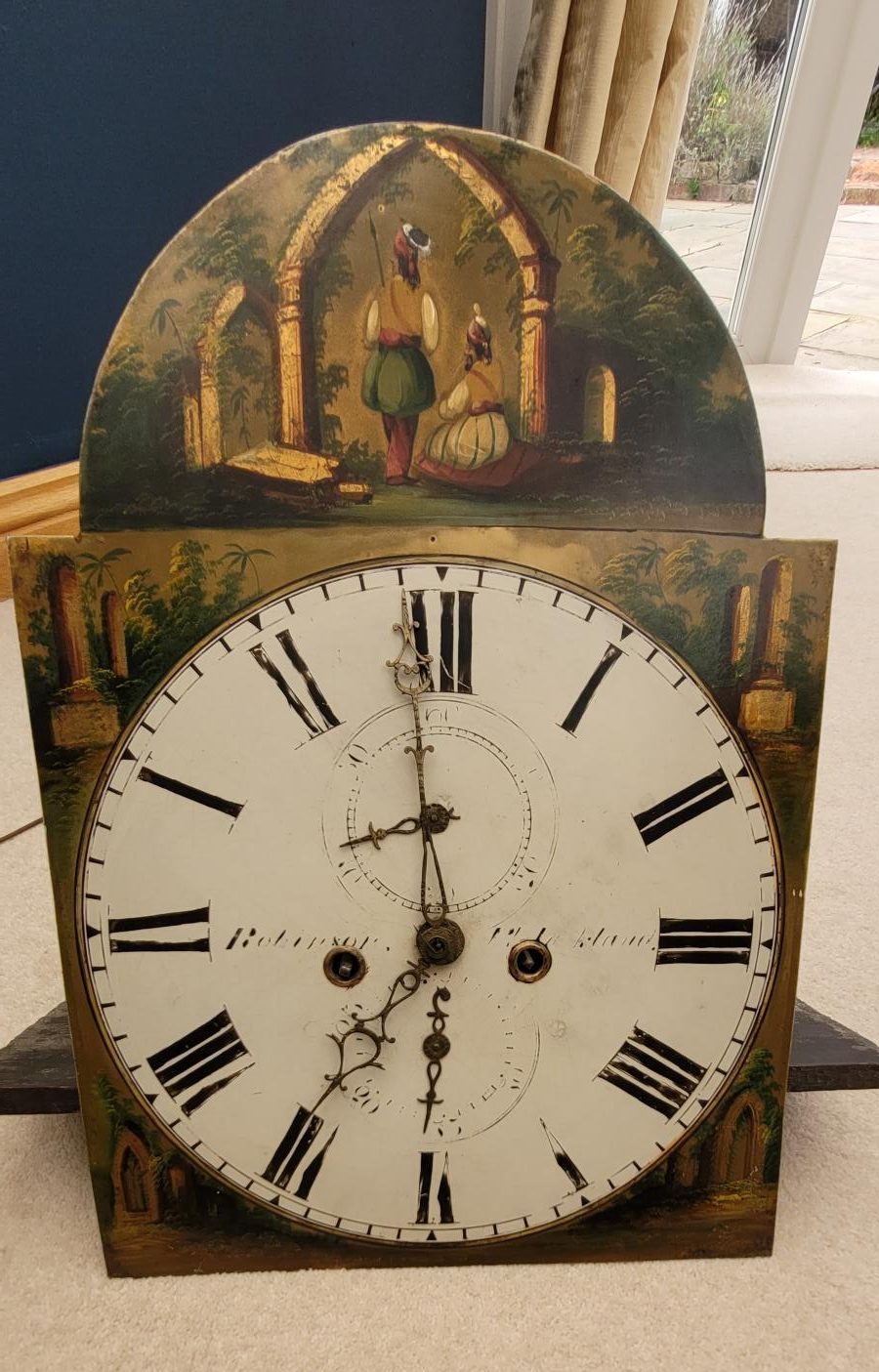Bush bash bosh – this looks like a case of horological vandalism. I may be wrong. I would love it if those who know better correct me.

Gary, custodian of the ‘Robinson of Bishop Auckland’ longcase clock, had said it hadn’t run for forty years. (See two previous posts). And while cleaning it and reassembling, I noticed an inscription etched into the front plate, at its bottom right. It supports his contention.
It is hard to make out the initials but they look like W McG and the date is clearly 10/10/82. What might it tell us?
Crude Hammering
Clockmenders often leave their mark to indicate they have worked on a movement and I am certain that is what this denotes. But as I look more closely at the plates I wonder whether he was the one who did what many professionals would call ‘clock vandalism’. I like to believe not – and that the crude hammering of the plate to avoid the trouble of re-bushing the pivot hole which accommodates the escape wheel pivot was done by someone some time earlier – someone who did not leave their calling card.

Circling the oval
Taking a hammer to a clock. Let me explain. Clocks wear with time. Mostly they wear through abrasion. The arbors (or rods) which hold the wheels (or cogs) sit in little pivot holes in the front and back plates which hold the movement together and in between which half the excitement of a clock happens. As the pivots turn in their snug holes, over time the light oil that lubricates their movement gathers dust and creates an abrasive paste. This grinds at the bottom of the hole, turning the round hole into an oval. In turn this drops the arbor ever so slightly lower. This means that the teeth of the wheel which the arbor holds don’t connect quite so accurately with the pinion on the next wheel. The whole thing gets out of alignment and ultimately stops.
This requires the now oval hole to be made round again, by skilfully broaching it out. But this makes the hole too big. So into it is inserted a bush – a small circle of brass with a hole the size of the original with the centre of the hole exactly where the original centre was. The pivot is cleaned and smoothed to make perfect fit, and the clock runs like… well, like clockwork.
Horological sacrilege
Alternatively, you take a hammer and a punch to the clock and smash the brass plate to fill the worn away brass and make the hole vaguely round again. It can sometimes achieve the same result but it is a bit… well, hit and miss. And it is horological sacrilege.

So, my next dilemma. Effectively, to misquote the song, the bad craftsmanship is ‘hiding in a hiding place where no-one ever goes‘. Continuing the musical theme, and to misquote a Motown classic, it lurks ‘behind a painted dial’. No-one will see it.
Do I accept that the clock runs in its current state or do I intervene and attempt a proper re-bushing?
I am prone to hyperbole. And this may sound like an exaggerated over-dramatisation. But now it feels a little as if, in expectation, ‘a nation turns its lonely eyes to me’.
With thanks once more to Simon & Garfunkel, and The Isley Brothers.
